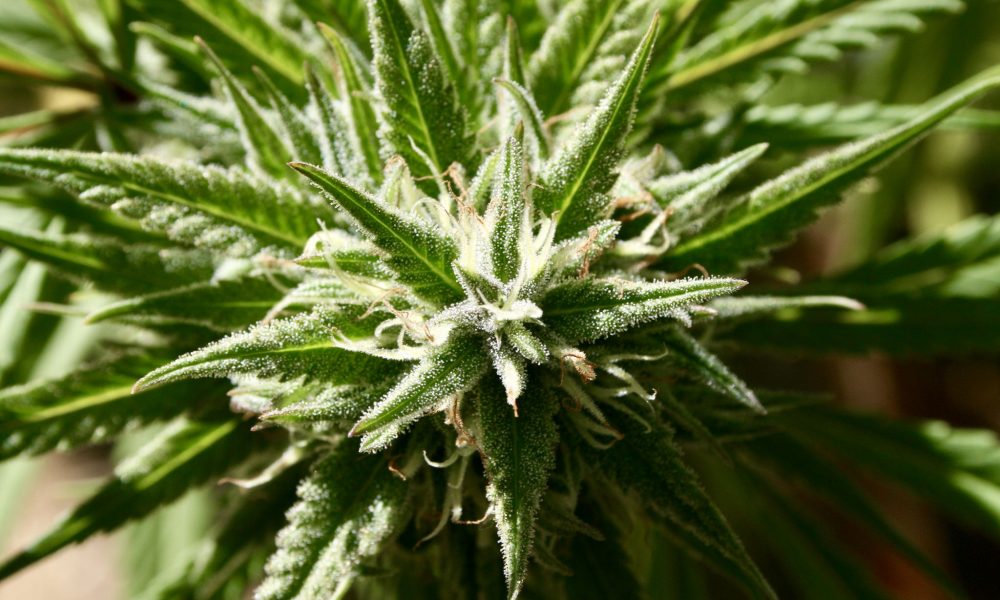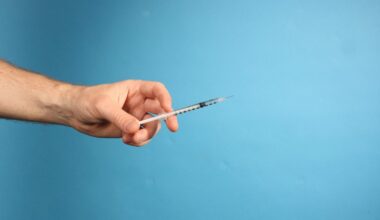A top federal health agency is seeking to promote studies into the efficacy of a variety of harm reduction policies—including decriminalization and safe consumption sites—as part of a push to combat the overdose epidemic.
While the Biden administration has yet to take a position on policy proposals to authorize safe consumption facilities, the National Institutes of Health (NIH) put out a pair of requests for applications (RFAs) on Wednesday for an effort that will provide funding for efforts to investigate how that and other harm reduction policies could help address the drug crisis.
Specifically, NIH wants to establish a Harm Reduction Network that seeks to “increase our understanding of the effectiveness, implementation and impact of existing and new harm reduction practices to address the ongoing opioid crisis and substance use disorder more broadly.”
HEAL Initiative: Harm Reduction Policies, Practices, and Modes of Delivery for Persons with Substance Use Disorders (R01 Clinical Trial Optional) https://t.co/59VOnbTVmj
— NIH Funding (@NIHFunding) December 29, 2021
A parallel RFA calls for a coordination center within the network to provide “logistical and coordination support,” “data harmonization and data sharing supports” and “research and clinical practice resources.”
Applications are being accepted for projects that involve “(1) developing and testing new harm reduction strategies; (2) examining how to effectively implement new and existing harm reduction strategies; (3) expanding the settings and delivery models through which harm reduction strategies are deployed; and (4) examining the impact of new harm reduction policies implemented at state and local levels.”
“Harm reduction services aim to prevent or minimize adverse outcomes related to substance use, such as fatal and non-fatal overdose and infectious disease transmission,” the notice states. “Examples of established harm reduction approaches include naloxone, fentanyl test strips (FTS), safer smoking equipment, and sterile syringes, as well as human immunodeficiency virus (HIV) and Hepatitis C virus testing.”
The notices from NIH and component agencies such as the National Institute on Drug Abuse (NIDA) say that “emerging” harm reduction policies “include decriminalization of various drugs, police and prosecutor-driven deflection and diversion efforts, and the authorization of safe consumption sites.”
They also note that the White House Office of National Drug Control Policy (ONDCP) is prioritizing harm reduction policy as a means of preventing overdoses.
HEAL Initiative: Harm Reduction Policies, Practices, and Modes of Delivery for Persons with Substance Use Disorders: Coordination Center (R24 Clinical Trial Optional) https://t.co/KPWFRhszv9
— NIH Funding (@NIHFunding) December 29, 2021
NIDA Director Nora Volkow has repeatedly expressed concerns about the harms caused by the criminalization of drug possession, and has specifically called out the racial disparities in enforcement as a major problem—including in an interview with Marijuana Moment and in several op-eds.
When it comes to safe consumption sites, Volkow said earlier this year that she is open to continuing to explore “how these support systems as a community can help people, for example, engage in treatment, how they can prevent them from getting infected from HIV and how they can prevent them from overdosing and dying.”
New York City launched the first sanctioned safe consumption site late last this month, and advocates have been left wondering how the federal government will respond given its role in blocking a Philadelphia non-profit, Safehouse, for launching its own harm reduction center.
New York City officials say the sites—where people can use currently illicit drugs in a medically supervised environment where they have access to treatment resources—have already saved dozens of lives.
That’s just one part of NIH’s research initiative on harm reduction, however. Here’s a description of the research topics it wants to explore:
-
Research to develop and test novel approaches and/or settings for harm reduction service provision, including strategies that involve sectors outside of the healthcare system and strategies that are not contingent upon face-to-face interaction
-
Research that seeks to understand individual- and system-level barriers to providing effective, scalable, and sustainable harm reduction services, such as individuals forgetting or being unwilling to carry naloxone or fentanyl test strips, workforce shortages, funding limitations, and stigmatizing attitudes toward individuals with SUD.
-
Research to develop and/or test strategies to address identified barriers to effective, scalable, and sustainable harm reduction services,
-
Research on strategies to ensure that individuals from vulnerable, understudied, and/or hard-to-reach populations have access to and are benefitting from harm reduction services.
-
Research on the implications of emerging harm reduction policies, including their effectiveness in decreasing adverse outcomes and the barriers/facilitators to successful implementation in real-world settings
-
Research on harm reduction strategies for individuals using methamphetamine and other stimulants
Nine applicants will be selected to conduct the studies as part of the five-year program. It’s approving up to $6.75 million for the projects in fiscal year 2022.
The new notice also talks about applications for marijuana research, stressing that any such studies are “required to measure and report results using a standard delta-9-THC unit in all applicable human subjects’ research.”
“The goal is to increase the comparability across cannabis research studies. A standard delta-9-THC unit is defined as any formulation of cannabis plant material or extract that contains 5 milligrams of delta-9-THC,” it says. “A justification should be provided for human research that does not propose to use the standard unit.”
With respect to safe consumption sites, activists in several cities have attempted to establish these centers in recent years.
In October, the Supreme Court rejected a request to hear a case on the legality of establishing the facilities in Philadelphia, but the case is still before a lower court and advocates are eagerly waiting for a DOJ response to show where the agency decides to come down on the issue under the Biden administration.
Under a mutual agreement between federal officials and Safehouse, the deadline for the administration to submit their position was pushed back on until March 7. It had previously been extended to November 5 of this year. Advocates see that as a positive sign.
The White House drug czar, Rahul Gupta, recently said that it’s critical to explore “any and every option” to reduce overdose deaths, and that could include allowing safe consumption sites for illegal substances if the evidence supports their efficacy.
The ONDCP director previously said that he couldn’t talk about the harm reduction centers due to the ongoing litigation related to Safehouse, but he seemed more open to the possibility in the recent interview with CNN.
The secretary of the U.S. Department of Health and Human Services (HHS), Xavier Bacerra, also recently signaled that the Biden administration would not move to block the establishment safe injection sites, stressing that “we are literally trying to give users a lifeline.”
But a department spokesperson later walked those remarks back, stating that “HHS does not have a position on supervised consumption sites” and the “issue is a matter of ongoing litigation.” In any case, it would be up to DOJ to decide whether to pursue operators of the facilities under the Controlled Substances Act.
Bacerra was among eight top state law enforcement officials who filed an amicus brief in support of the Safehouse’s safe injection site plan when he served as California’s attorney general.
The Biden administration has generally promoted the concept of harm reduction as part of its drug policy, but it hasn’t formally weighed in on safe consumption sites in particular.
Advocates have put the current situation in no uncertain terms. They say the harm reduction centers could mean the difference between life and death for countless Americans who consume currently illegal drugs.
The early data out of New York City signals that the facilities could prevent significant more deaths than the health department projected. Its feasibility study found the safe consumption sites could save as many as 130 lives per year.
The legal complication for these harm reduction sites is principally related to a so-called federal “crack house statute” that makes it a felony to use a location for the manufacturing, distribution or consumption of controlled substances.
A coalition of 80 current and former prosecutors and law enforcement officials—including one who is Biden’s pick for U.S. attorney of Massachusetts—previously filed a brief urging the Supreme Court to take up Safehouse’s safe consumption case.
While New York City is the first to open the harm reduction centers, the governor of Rhode Island did sign a historic bill in July to establish a safe consumption site pilot program.
Massachusetts lawmakers advanced similar legislation last year, but it was not ultimately enacted.
A similar harm reduction bill in California, sponsored by Sen. Scott Wiener (D), was approved in the state Senate in April, but further action has been delayed until 2022.
Here Are The Biggest Marijuana, Psychedelics And Drug Policy News Stories Of 2021
Photo courtesy of Jernej Furman.
Medical Disclaimer:
The information provided in these blog posts is intended for general informational and educational purposes only. It is not a substitute for professional medical advice, diagnosis, or treatment. Always seek the advice of your physician or other qualified healthcare provider with any questions you may have regarding a medical condition. The use of any information provided in these blog posts is solely at your own risk. The authors and the website do not recommend or endorse any specific products, treatments, or procedures mentioned. Reliance on any information in these blog posts is solely at your own discretion.







